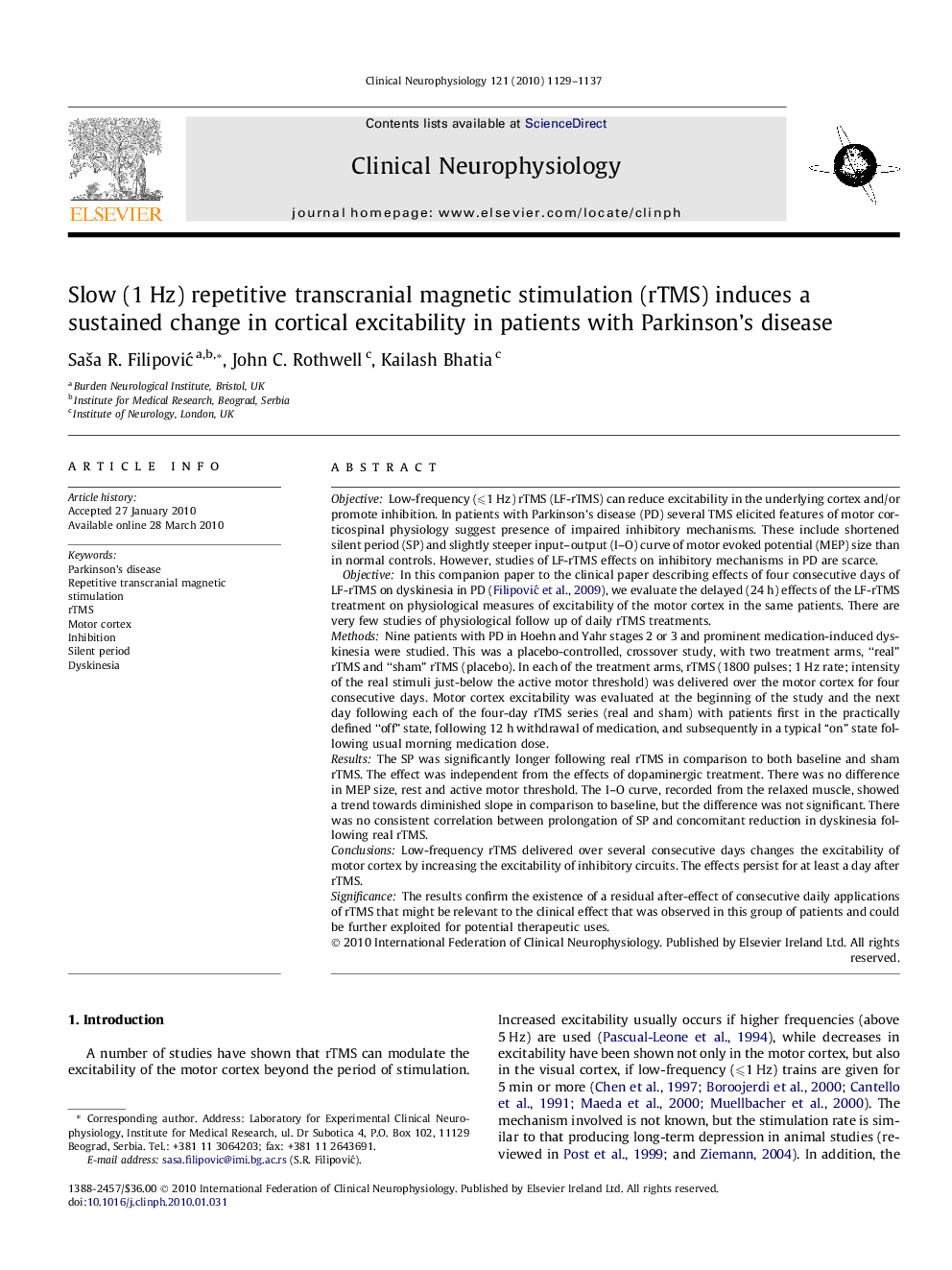| Article ID | Journal | Published Year | Pages | File Type |
|---|---|---|---|---|
| 3045938 | Clinical Neurophysiology | 2010 | 9 Pages |
ObjectiveLow-frequency (⩽1 Hz) rTMS (LF-rTMS) can reduce excitability in the underlying cortex and/or promote inhibition. In patients with Parkinson’s disease (PD) several TMS elicited features of motor corticospinal physiology suggest presence of impaired inhibitory mechanisms. These include shortened silent period (SP) and slightly steeper input–output (I–O) curve of motor evoked potential (MEP) size than in normal controls. However, studies of LF-rTMS effects on inhibitory mechanisms in PD are scarce.In this companion paper to the clinical paper describing effects of four consecutive days of LF-rTMS on dyskinesia in PD (Filipović et al., 2009), we evaluate the delayed (24 h) effects of the LF-rTMS treatment on physiological measures of excitability of the motor cortex in the same patients. There are very few studies of physiological follow up of daily rTMS treatments.MethodsNine patients with PD in Hoehn and Yahr stages 2 or 3 and prominent medication-induced dyskinesia were studied. This was a placebo-controlled, crossover study, with two treatment arms, “real” rTMS and “sham” rTMS (placebo). In each of the treatment arms, rTMS (1800 pulses; 1 Hz rate; intensity of the real stimuli just-below the active motor threshold) was delivered over the motor cortex for four consecutive days. Motor cortex excitability was evaluated at the beginning of the study and the next day following each of the four-day rTMS series (real and sham) with patients first in the practically defined “off” state, following 12 h withdrawal of medication, and subsequently in a typical “on” state following usual morning medication dose.ResultsThe SP was significantly longer following real rTMS in comparison to both baseline and sham rTMS. The effect was independent from the effects of dopaminergic treatment. There was no difference in MEP size, rest and active motor threshold. The I–O curve, recorded from the relaxed muscle, showed a trend towards diminished slope in comparison to baseline, but the difference was not significant. There was no consistent correlation between prolongation of SP and concomitant reduction in dyskinesia following real rTMS.ConclusionsLow-frequency rTMS delivered over several consecutive days changes the excitability of motor cortex by increasing the excitability of inhibitory circuits. The effects persist for at least a day after rTMS.SignificanceThe results confirm the existence of a residual after-effect of consecutive daily applications of rTMS that might be relevant to the clinical effect that was observed in this group of patients and could be further exploited for potential therapeutic uses.
